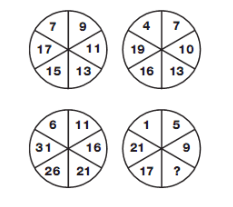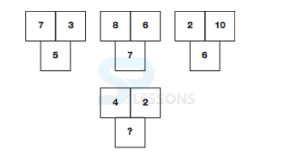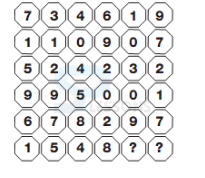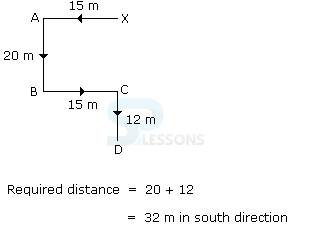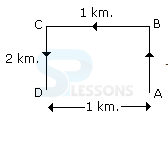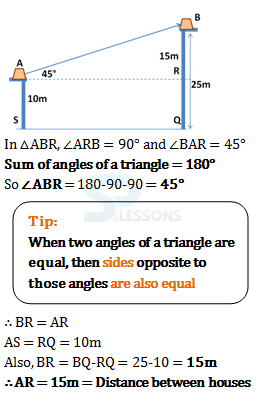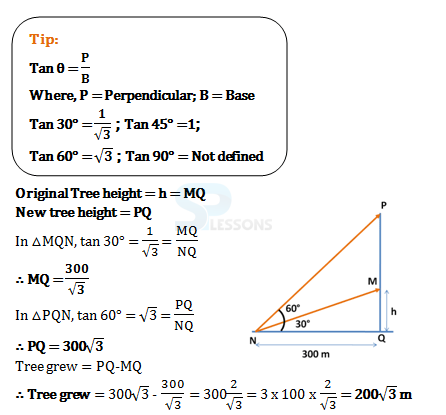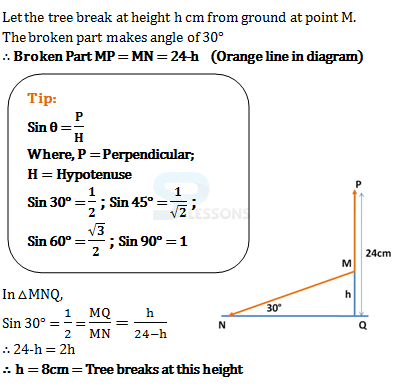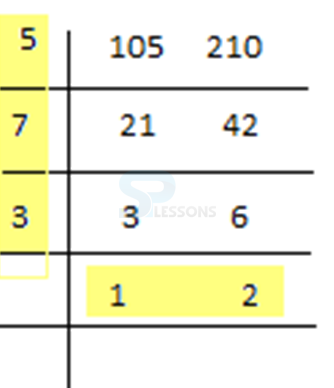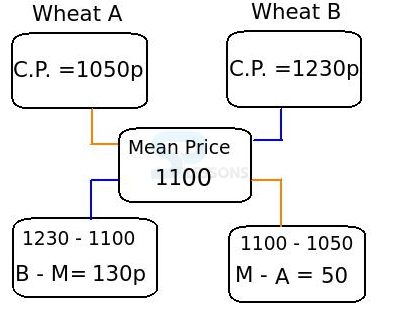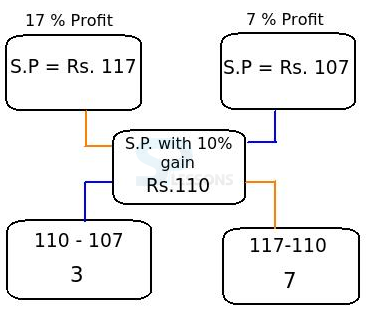 Introduction
Introduction
Karimnagar DCCB 2018 – Online Test/Examination, conducted in online Mode, has: a duration of 1 hour, a total of 100 questions, a maximum score of 100 marks, and consists of 3 sections, namely – English Language, Numerical Ability and Quantitative Aptitude/Numerical Ability. The 3 sections are separately timed and the questions can be attempted in any order.
 Pattern
Pattern
For: Assistant Manager
For: Staff Assistant
| Sl. No | Name of Tests (objective) | No. of questions | Max. Marks | Time allotted for each test (Separately timed) |
|---|---|---|---|---|
| 1 | Test of English language. | 30 | 30 | 20 Minutes |
| 2 | Test of Reasoning | 35 | 35 | 20 Minutes |
| 3 | Test of Quantitative Aptitude. | 35 | 35 | 20 Minutes |
| Total | 100 | 100 |
| Sl. No | Name of Tests (objective) | No. of questions | Max. Marks | Time allotted for each test (Separately timed) |
|---|---|---|---|---|
| 1 | Test of English language. | 30 | 30 | 20 Minutes |
| 2 | Test of Reasoning | 35 | 35 | 20 Minutes |
| 3 | Test of Numerical Ability. | 35 | 35 | 20 Minutes |
| Total | 100 | 100 |
Penalty for Wrong Answers:
There will be the penalty for wrong answers marked in the Objective Tests. For each question for which a wrong answer has been given by the candidate one fourth or 0.25 of the marks assigned to that question will be deducted as penalty to arrive at corrected score. If a question is left blank, i.e., no answer is marked by the candidate, there will be no penalty for that question.
 Syllabus
Syllabus
[Click Here] for detailed syllabus.
 Samples
Samples
Prepositions
1. The public are cautioned---- pickpockets.
- A. against
B. to
C. at
D. by
- A. into, to
B. by, with
C. to, is
D. at, to
- A. to
B. since
C. at
D. from
- A. I had sold my bicycle.
B. I have sold my bicycle.
C. They sold my bicycle.
D. My bicycle will sell.
- A. He asked me to keep waiting.
B. I was kept waiting.
C. He asked me to wait and did not return.
D. I was waiting for him.
- A. I bless you with happiness.
B. May God bless you with happiness.
C. God blesses you with happiness.
D. God will bless you with happiness.
- A. A and B
B. Only A
C. A and C
D. Only C
E. All the three
- A. Only A
B. A and C
C. B and C
D. A and B
E. B and C
- A. Only A
B. Only B
C. Only C
D. A and B
E. None of these
- A. he took to
B. reading times
C. for better knowledge
D. of the facts
E. no error
- A. this town isn’t very well known
B. and there isn’t much to see
C. so a few tourists come here
D. no error
- A. suganya opened a almirah
B. full of books
C. and took one of them
D. for reading
E. no error
- A. Exult
B. Twist
C. Friend
D. Relative
- A. Foretell
B. Decide
C. Prevent
D. Discover
- A. Pretty
B. Clever
C. Pleasant
D. Present
- A. may sometimes succeed
B. may sometime succeed
C. sometimes succeed
D. sometimes succeeds
- A. has complete
B. have complete
C. is complete
D. had complete
- A. only little
B. very little
C. little
D. none
- A. to provide with
B. at providing with
C. to provide
D. to the provision of
E. No correction required
- A. but also to carry on
B. but to carry out also
C. but also to carry out
D. and to carry out
E. No correction required
- A. every year is dying as
B. has died every year as if
C. die every year when
D. was dying every year when
E. No correction required.
- A. That but it wasn't really popular in the United States.
B. That but Stocks originally started as auctions where traders called out names of companies and the shares available.
C. That there was an auction that took place and the shares went to the highest bidders.
D. Both a and b
E. Both b and c
- A. After that, the New York Stock Exchange became the number one trading center.
B. The reason for this being that its members focused on buying securities of larger corporations.
C. The central financial center of the United States.
D. Both a and b
E. Both b and c
- A. During the 1920's millions of Americans began investing in stocks for the first time.
B. They heard about how rich people were getting by investing so they all decided to do it.
C. Many new investors entered the stock market using borrowed money.
D. The American Stock Exchange. It was renamed to this in 1953.
E. Both a and b
- A. wants to do it.
B. take some action.
C. decides to spread that quality around.
D. behave properly.
- A. needs hard work and maturity.
B. requires ethical compromises.
C. demands over time.
D. Requires good business knowledge.
- A. work with me.
B. ask me not to do.
C. stop me.
D. judge me.
- A. changes, biggest
B. reforms, talented
C. alleviation. Skillful
D. quality, brighter
E. outcomes demanded
- A. allowing, turn
B. posing, grew
C. estimating, exist
D. perceiving, arising
E. declaring, become
- A. significantly, abilities
B. appropriately, achievement
C. severely, advantages
D. adversely, problems
E. positively issued
- A. If you have been
B. Had you been
C. Have you been
D. If you could have been
E. No correction required
- A. besides the heavy downpour
B. despite the heavy downpour
C. in spite of the heavy downpour
D. although the heavy downpour
E. No correction required
- A. approve with that of the student's behavior
B. approve of the student's behavior
C. approve of the student's behavior
D. approve for the student's behavior
E. No correction required
- A. imagined
B. depict
C. shown
D. visualized
E. characterized
- A. Increase
B. variance
C. more
D. decrease
E. abundance
- A. weakens
B. initiates
C. awakens
D. strengthens
E. volatile
- A. flora
B. fauna
C. forest
D. vegetation
- A. painter
B. calligraphy
C. palegraphy
D. draftsman
- A. widow
B. celibate
C. widower
D. divorcee
- A. composure
B. temper
C. anger
D. irritation
- A. unwell
B. abroad
C. lonely
D. depressed
- A. jugglery
B. indifference
C. diversification
D. obsession
- A. Clear
B. Dim
C. Brittle
D. Clever
- A. Group
B. Peak
C. Select
D. Marry
- A. Round
B. Unimportant
C. Thin
D. Dull
- A. PQRS
B. PRQS
C. SPQR
D. SQPR
- A. QSPR
B. PRSQ
C. QPRS
D. QRPS
- A. PQRS
B. PQSR
C. QPSR
D. QRPS
Inserting Correct Mathematical Sign
1. If ‘x’ means ‘-' , ‘-' means ‘x’, ‘+’ means ‘÷' and ‘÷' means ‘-', then (15 - 10) ÷ (130 + 10) x 50 = ?
- A. 1800
B. 113
C. 2000
D. 87
- A. x - ÷
B. + - x
C. x - +
D. + x –
- A. 42
B. 18
C. 40
D. 2
- A. 263
B. 383
C. 331
D. 551
- A. 61
B. 71
C. 73
D. 81
- A. 26
B. 24
C. 21
D. 18
- A. Son
B. Brother
C. Cousin
D. Brother-in-law
- A. Daughter
B. Grandmother
C. Mother
D. Cannot be determined
E. None of these
- A. M + K + R
B. M - R + K
C. M + K - R
D. M + K * R
E. None of these
- A. 16
B. 13
C. 97
D. 56
- A. 9
B. 6
C. 3
D. 1
- A. 2 and 3
B. 8 and 1
C. 9 and 9
D. 5 and 6
- A. Sister
B. Son
C. Daughter
D. Father
E. None of these
- A. Daughter
B. Sister
C. Mother
D. Niece
E. None of these
- A. Sister
B. Mother-in-law
C. Mother
D. Step-daughter
E. None of these
- A. 1 and 4 only
B. 3 and 4 only
C. 1 and 2 only
D. 2 and 3 only
- A. 1 only
B. 2 only
C. 1 and 3 only
D. 1, 2, 3 and 4 only
- A. 1
B. 2
C. 3
D. 4
- A. 32 m, South
B. 47 m, East
C. 42 m, North
D. 27 m, South
- A. 65 km
B. 75 km
C. 80 km
D. 85 km
- A. 1 km
B. 2 km
C. 3 km
D. 5 km
- A. 3, 2, 4, 5, 1
B. 5, 4, 1, 3, 2
C. 3, 2, 5, 1, 4
D. 5, 1, 2, 3, 4
- A. 4, 2, 1, 3
B. 2, 4, 1, 3
C. 2, 1, 4, 3
D. 1, 4, 2, 3
- A. 2, 1, 4, 3
B. 4, 1, 3, 2
C. 3, 2, 4, 1
D. 1, 4, 3, 2
- A. 18
B. 28
C. 31
D. 103
- A. x, x, x
B. -, +, x
C. x, +, x
D. +, -, x
- A. 80
B. 25
C. 24
D. 5
- A. 1
B. 2
C. 3
D. 4
E. 5
- A. 1
B. 2
C. 3
D. 4
E. 5
- A. 1
B. 2
C. 3
D. 4
E. 5
- A. 48
B. 64
C. 40
D. 46
E. 44
- A. 32
B. 30
C. 33
D. 34
E. 35
- A. 30
B. 22
C. 27
D. 29
E. 31
- A. Rohan
B. Sachin
C. Anuj
D. Kunal
E. None of these
- A. Sachin
B. Kunal
C. Anuj
D. Rohan
E. None of these
- A. Kunal
B. Rohan
C. Sachin
D. Anuj
E. None of these
- A. 23
B. 31
C. 27
D. 28
- A. 45
B. 47
C. 46
D. 48
- A. 37
B. 39
C. 27
D. 38
- A. MFEDJJOE
B. EOJDEJFM
C. MFEJDJOE
D. EOJDJEFM
- A. EDRIRL
B. DCQHQK
C. ESJFME
D. DEQJQM
- A. CHMFINTK
B. LNKTCHMF
C. LNTKCHMF
D. NITKHCMF
- A. 75
B. 89
C. 65
D. 82
E. None of these
- A. 5
B. 15
C. 25
D. 10
E. None of these
- A. 36
B. – 16
C. 26
D. 16
E. None of these
Simple Interest
1. How much time will it take for an amount of Rs. 450 to yield Rs. 81 as interest at 4.5% per annum of simple interest?
- A. 3.5 years
B. 4 years
C. 4.5 years
D. 5 years
- A. 10%
B. 10.25%
C. 10.5%
D. None of these
- A. 18 m
B. 12 m
C. 7.5 m
D. 15 m
- A. 100[latex]\frac {1}{2}[/latex] m
B. 200[latex]\sqrt {3}[/latex] m
C. 300(1/[latex]\sqrt {3}[/latex])
D. 200/[latex]\sqrt {3}[/latex] m
- A. 12 cm
B. 8 cm
C. 9.5 cm
D. 7.5 cm
- A. 84
B. 90
C. 168
D. 336
- A. 3.6 kg
B. 3.696 kg
C. 36 kg
D. 36.9 kg
- A. 49 m[latex]^{2}[/latex]
B. 50 m[latex]^{2}[/latex]
C. 53.5 m[latex]^{2}[/latex]
D. 55 m[latex]^{2}[/latex]
- A. log[latex]_{10}[/latex] 10 = 1
B. log (2 + 3) = log (2 x 3)
C. log[latex]_{10}[/latex] 1 = 0
D. log (1 + 2 + 3) = log 1 + log 2 + log 3
- A. 0.934
B. 0.945
C. 0.954
D. 0.958
- A. [latex]\frac {699}{301}[/latex]
B. [latex]\frac {1000}{301}[/latex]
C. 0.3010
D. 0.6990
- A. 18 m
B. 20 m
C. 27 m
D. 9 m
- A. 5.15 kmph
B. 4.14 kmph
C. 4.25 kmph
D. 4.4 kmph
- A. 40 sec
B. 47 sec
C. 33 sec
D. None of these
- A. 215
B. 109.68
C. 185.56
D. 108
E. None of these
- A. 20
B. 10
C. 60
D. 0
E. None of these
- A. Rs. 1200
B. Rs. 2400
C. Rs. 4800
D. Cannot be determined
E. None of these
- A. 17[latex]\frac {6}{7}[/latex] km/hr
B. 25 km/hr
C. 30 km/hr
D. 35 km/hr
- A. 8 kmph
B. 11 kmph
C. 12 kmph
D. 14 kmph
- A. 35
B. 36[latex]\frac {1}{3}[/latex]
C. 37[latex]\frac {1}{2}[/latex]
D. 40
- A. 10 mats
B. 15 mats
C. 20 mats
D. 30 mats
- A. 18 hours
B. 30 hours
C. 40 hours
D. 50 hours
- A. 10
B. 11
C. 13
D. 15
- A. 50
B. 72
C. 85
D. 120
- A. 450
B. 362
C. 250
D. 180
- A. 1260
B. 1140
C. 2580
D. 3200
- A. 0
B. 10
C. 10[latex]^{2}[/latex]
D. 10[latex]^{3}[/latex]
- A. 3
B. 1
C. 6
D. 4
- A. –[latex]\frac {1}{11}[/latex]
B. – [latex]\frac {11}{121}[/latex]
C. [latex]\frac {1}{122}[/latex]
D. [latex]\frac {121}{11}[/latex]
- A. 6 hours
B. 9 hours
C. 12 hours
D. 15 hours
- A. 8 hrs
B. 16 hrs
C. 21 hrs
D. 36 hrs
- A. 6 hrs
B. 7 hrs
C. 8 hrs
D. 14 hrs
- A. 2 hrs
B. 4 hrs
C. 6 hrs
D. 8 hrs
- A. 11 km/hr
B. 31 km/hr
C. 55 km/hr
D. 62 km/hr
- A. 21
B. 22
C. 23
D. 24
- A. 8844
B. 9999
C. 9944
D. 9930
- A. Rs. 1,10,000
B. Rs. 1,2,5000
C. Rs. 98,000
D. Rs. 80,000
- A. Rs. 213818.16
B. Rs. 223878.12
C. Rs. 203818.16
D. Rs. 219818.13
- A. 63: 48: 196
B. 66: 49: 190
C. 56: 40: 186
D. 46: 38: 160
- A. 153
B. 150
C. 100
D. 125
- A. 9900
B. 9750
C. 9450
D. 9000
- A. 1.3
B. 1.25
C. 2.1
D. 4.30
- A. 10
B. 12
C. 6
D. 20
- A. 25
B. 50
C. 100
D. 75
- A. 8000
B. 10000
C. 12000
D. 15000
- A. Rs. 1648.64
B. Rs. 1596.32
C. Rs. 14826.56
D. Rs. 11563.99
- A. 1584
B. 1120
C. 792
D. 1320
- A. 25%
B. 20%
C. 30%
D. 10%
- A. 4 days
B. 6 days
C. 9 days
D. 12 days
- A. 30 days
B. 45 days
C. 60 days
D. 90 days
- A. 13: 5
B. 18 : 3
C. 17: 5
D. 11: 5
- A. 30 kg
B. 35 kg
C. 40 kg
D. 45 kg
- A. [latex]\frac {73}{99}[/latex]
B. [latex]\frac {73}{100}[/latex]
C. [latex]\frac {73}{90}[/latex]
D. [latex]\frac {73}{900}[/latex]
- A. [latex]\frac {a}{10}[/latex]
B. 10 a
C. [latex]\frac {a}{1000}[/latex]
D. 1000a
- A. 9/25
B. 9/50
C. 18/25
D. None of these
- A. 17/52
B. 8/13
C. 4/13
D. 1/13
- A. 20
B. 25
C. 30
D. 35
- A. 12
B. 11
C. 10
D. 9
- A. 54.78
B. 55.23
C. 50.36
D. 58.33
- A. 450
B. 500
C. 400
D. 410
- A. 60
B. 70
C. 80
D. 100
- A. 49
B. 33
C. 77
D. 73
- A. 659
B. 694
C. 841
D. 859
- A. 6.2 years
B. 7.7 years
C. 8.7 years
D. 10 years
- A. 25 years
B. 26 years
C. 31 years
D. 35 years
 Best Books
Best Books
| Name of the Book | Name of the Author | Year of Publication | Book Price in Rs | Book Rating | Get Book |
|---|---|---|---|---|---|
| New Pattern English Language for SBI/ IBPS Bank PO/ SO/ Clerk/ RRB Exams (English, Paperback, Disha Experts) | Disha Experts | 2018 | RS.189/- | ----- | Flipkart |
| Bank PO English Language : 17 Years (2000 - 2016) Chapterwise Solved Papers (English, Paperback, Arihant Experts) | Arihant | 2018 | Rs.201/- | 4.3/5 | Flipkart |
| Bank PO English language Chapterwise Solved Papers - 1723 [Print Replica] Kindle Edition | Think Tank of Kiran Prakashan & KICX | 2018 | Rs.323/- | 3.0/5 | Amazon |
| Winning with English Language 2018 For Competitive Exams: For Banking, IBPS - PO and Clerical, UPSC, IAS, SSC, RAILWAYS, CTET, NDA, CDS, RRB and other (Asktenali Winning Series Book 104) Kindle Edition | Swaminathan Sankaran | 2018 | Rs.76/- | ----- | Amazon |
| Name of the Book | Name of the Author | Year of Publication | Book Price in Rs | Book Rating | Get Book |
|---|---|---|---|---|---|
| 14 Kiran’s Tricky Approach To Competitive Reasoning Verbal & Non Verbal (Fully Solved) 7000+objective Question Logical Reasoning & Analytical Ability—English (Paperback, Kiran) | Kiran | 2016 | RS.590/- | 3/5 | Flipkart |
| IBPS- CWE CLERK SPEED TESTS REASONING | BSC PUBLICATION | ----- | Rs.248/- | 3.6/5 | Flipkart |
| Topic-wise Solved Papers for IBPS/ SBI Bank PO/ Clerk Prelim & Mains (2010-16) Reasoning (English, Paperback, Disha Experts) | Disha Experts | 2017 | Rs.99/- | 4.1/5 | Flipkart |
| Reasoning for IBPS & All Other Examinations (English, Paperback, Sachchida Nand Jha) | Sachchida Nand Jha | 2014 | Rs.90/- | 3.5/5 | Flipkart |
| Reasoning Verbal, Non-Verbal & Analytical - for Competitive Examinations (Englsih, Paperback, Dipak Kumar Yugnirmal) | Dipak Kumar Yugnirmal | 2017 | Rs.400/- | ----- | Flipkart |
| Name of the Book | Name of the Author | Type of Book | Year of Publication | Book Price in Rs | Book Rating | Get Book |
|---|---|---|---|---|---|---|
| Quantitative Aptitude for All Competitive Examinations | Abhijit Guha | Prelims + Mains | 2016 | Rs.359/- | 3.5/5 | Amazon |
| Shortcuts in Quantitative Aptitude with 4 eBooks for Competitive Exams | Disha Experts | Prelims + Mains | 2016 | Rs.45/- | 3.1/5 | Amazon |
| Teach Yourself Quantitative Aptitude | Arun Sharma | Prelims + Mains | 2017 | Rs.259/- | 3.4/5 | Amazon |
| Quantitative Aptitude for competitive examination R S Agarwal 2017-2018 | R S Agarwal | Prelims + Mains | 2017 | Rs.694/- | ----- | Amazon |






